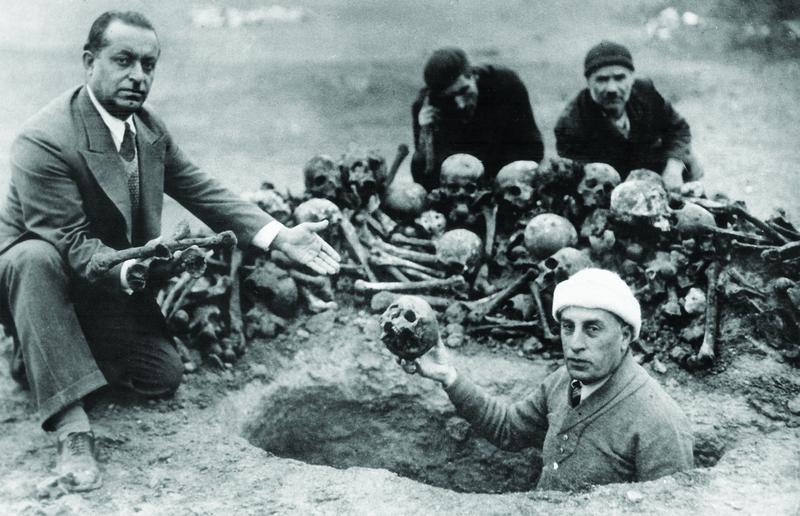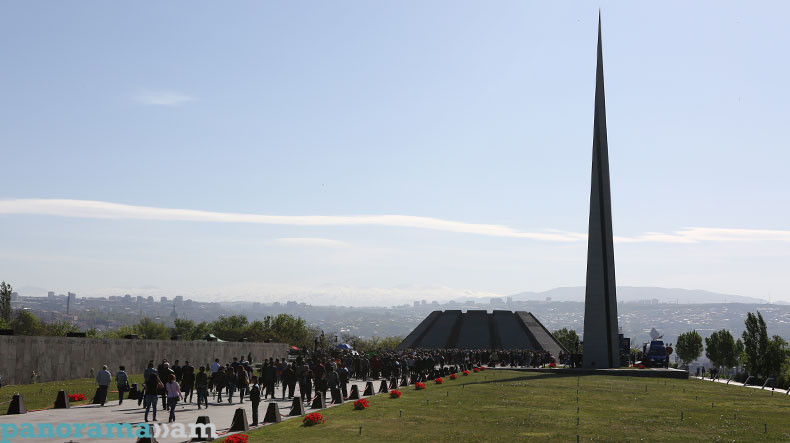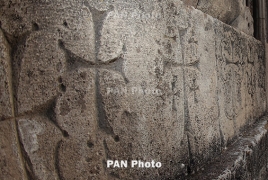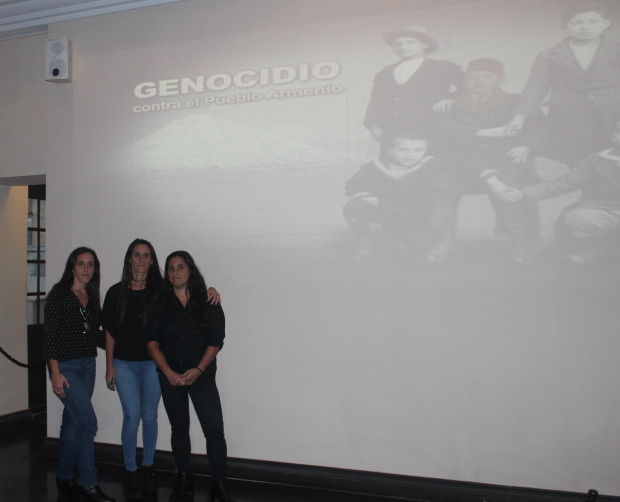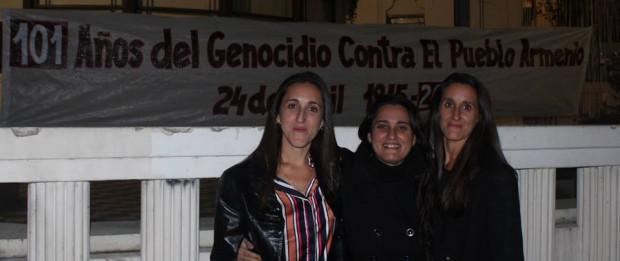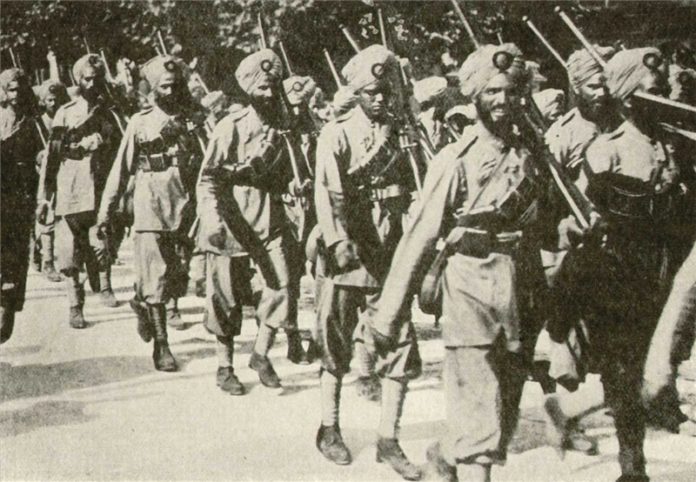Nov 9 2017
By Gail Marshall
09, 2017 11:41 AM
Who lives?
Who dies?
Who tells your story?
The haunting chorus of Lin Manuel Miranda’s ending to “Hamilton” swirls through my mind during my early-dawn reading of “Forced into Genocide: Memoirs of an Armenian Soldier in the Ottoman Turkish Army” by Yervant Alexanian.
I read it in one sitting, preparing for a presentation at Fresno State Tuesday by the book’s editor, Adrienne, Alexanian’s daughter. Her speech comes one day before his birthday, Nov. 15, 1895. He died in 1983. Perhaps she can take a moment on his birthday to sit in the exquisite Armenian Genocide Memorial at Fresno State. It would make a lovely photo.
Alexanian will fly in from her home in New York City to discuss this gripping and unique eyewitness account of a conscripted soldier forced to serve under the flag of the country that would put 51 members of his family to death. He kept his detailed journal a secret even from his family. And those stories would remain unknown to this day had it not been for his daughter, who discovered a cache of mysterious pages written in Armenian among her father’s belongings after he died.
If you live in the central San Joaquin Valley, you know the basic framework of the Armenian holocaust. There were systematic massacres by Ottoman Turks of about a million and a half Armenians between 1915 and 1923. Many escaped to the United States, and Fresno was a refuge.
We hear an unrelenting drumbeat from their sons and daughters for the U.S. to officially declare this horror a genocide at the hands of the Ottoman Turks and yet that remains denied. But they will not stop until their families’ sufferings are acknowledged. Fresno’s libraries and Bee files are filled with their memoirs, advocacy, poetry and artwork in honor of their slain relatives.
This book, however, is unique from all other stories. No comparable account is chronicled in Armenian Genocide literature, according to the scholars who have reviewed it. There are rare documents and photographs included. One reviewer said he shares not only the suffering of the victims but also the suffering of survivors.
Alexanian turned to a professor in Fresno State’s Armenian studies department, Dr. Sergio La Porta, for the introduction. This remarkable daughter is an accomplished woman herself, an educator and a 2010 recipient of the Ellis Island Medal of Honor.
Reading Alexanian’s memoir is far more than a recounting of history. We can see ourselves – today – in this story. The descriptions of the brutality faced by the refugees are all too fresh, for they are in our news reports constantly. From the memoir:
“I witnessed ... pogroms and massacres of Armenians, in full view of Western troops. I saw with my own eyes Armenians jump into the sea and swim toward the Allied battleships stationed offshore, which represented Christian nations, thinking the ships would save them...
Many of the battleships turned on their hot-water hoses to keep these poor souls away, causing them to drown. Only a Japanese battleship was willing to throw down the rope ladder and rescue Armenians.”
The survivors and their progeny have made it their communal goal to make sure no one forgets what is often called “a murderous stain on humanity.”
And with that, we welcome Adrienne Alexanian to Fresno and thank her for sharing this gift not only to the Armenian people, but all of us as well.
How did you discover your father’s story?
They say that “life is what happens when you’re making plans.” My only plan was to archive my father’s papers and memorabilia as chairman of four Armenian organizations. I then found numerous booklets, individual papers, rare documents in Ottoman Turkish and Armenian and one-of-a-kind pictures and surmised what I had, since my father never told my mother or me that he had written his own memoir. This was confirmed when I had all of the papers translated by two professional translators.
What was the biggest surprise you discovered in the memoir?
My father didn’t talk about his experiences in the Armenian Genocide because he didn’t want to traumatize me, so instead he wrote about them. He did say that he escaped a firing squad and that playing the bugle saved his life, while 51 members of his family were killed, but didn’t elaborate.
What surprised me was how detailed his memoir is and how his experiences are backed up with not only the details but also with documents and pictures.
It also surprised me that his experiences were so much more devastating than I had imagined.
What was the most difficult part of this immense project?
I not only edited the book but collaborated with the translator for over a year to make sure that every detail was included in my father’s memoir and also that the words accurately conveyed what my father intended.
Actually, the easiest part was getting the book published since Transaction, the first publisher I contacted, grabbed it since there are no other books in literature on this aspect of the genocide ... the survival of an Armenian man conscripted into the Ottoman Turkish Army.
The Valley has many people of Armenian descent. What special meaning would you like them to get from this?
I know that Armenians in Fresno strongly embrace their heritage and promote it. We always point to Fresno as a model since Armenians here have achieved so much success, not only personally, but also in the wider community.
My father’s memoir reinforces the fact that Armenians are a strong people who can survive the most traumatic events, like the Armenian genocide, and go on to realize the American dream. The majority of my father’s life in America was spent advocating for recognition of the Armenian Genocide and keeping our language and heritage alive.
I hope, too, that my father’s story encourages those Armenians who are not now part of advocacy groups to join and promote genocide recognition and the rest of Armenia’s agenda.
Describe the array of feelings this brought up for you as a daughter.
Of course, hearing about the brutality toward my father, his family and my people was very difficult to hear. Not only I, but the translators had to stop reading because our tears flowed on several occasions.
It angers me that not only has Turkey refused to admit that the Ottoman Empire is responsible for the genocide of 1 ½ million Armenians from 1915-1923, but it’s also not officially recognized by Israel, despite the fact that 6 million Jews died in the Holocaust, which was patterned after the Armenian genocide, nor the U.S. government despite the fact that 47 states have officially recognized it.
It saddens me that I will never get to know so many members of my father’s family and their potential offspring.
What about this project has brought you the most joy, gratitude or satisfaction?
My father always wanted his story told. If he were alive today, he would humbly say that he is just the messenger to tell a bigger story…that of the Armenian Genocide. My father’s memoir “Forced into Genocide” accomplishes both of my father’s goals.
I’m also very grateful that well-respected scholars such as Israel Charny, who wrote the foreward, and Sergio La Porta, who wrote the introduction, are involved in the book. There are endorsements from high-profile, well-respected men such as Taner Akcam, Vartan Gregorian, Eric Bogosian, congressman Frank Pallone, D-New Jersey, and Andrew Goldberg.
I’m also grateful that interest in my father’s memoir has been so positive that Amazon sold out of three units and is re-ordering a fourth.
Gail Marshall is the Acting Editor of the Editorial pages for The Fresno Bee. Connect with her at gmarshall@fresnobee.com.
If you go
Who: Adrienne G. Alexanian, editor of “Forced into Genocide”
What: Book reading, signing and sale, question-and-answer session, reception
When: Nov. 14, 7:30-9 p.m.
Where: Fresno State, University Business Center, Alice Peters Auditorium, Room 191, 5245 N. Backer Ave. Fresno
Cost: Free
Parking: Free in lots P6 and P5 near the University Business Center with a code at a campus kiosk for a parking permit. Call (559) 278-2669 to get the parking code or visit the website.
Event website: www.fresnostate.edu/artshum/armenianstudies/
Details: (559) 278-2669 to get the parking code or visit the website.





